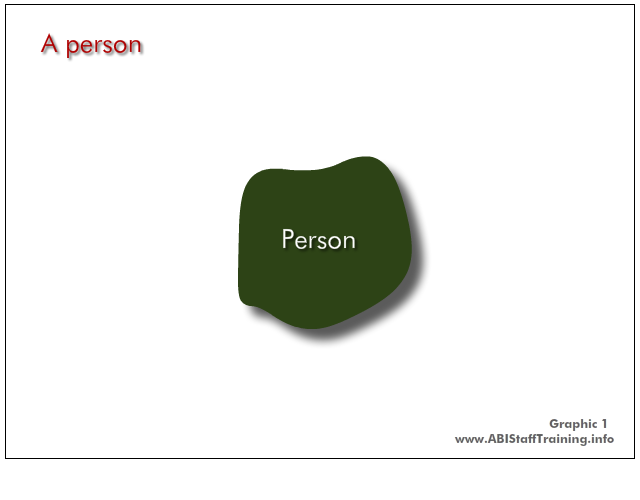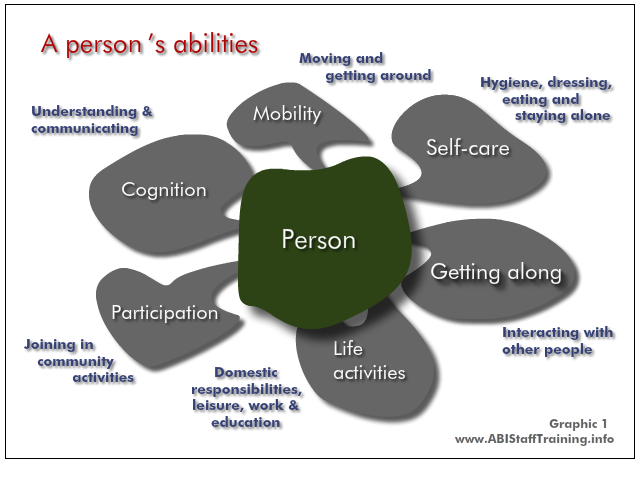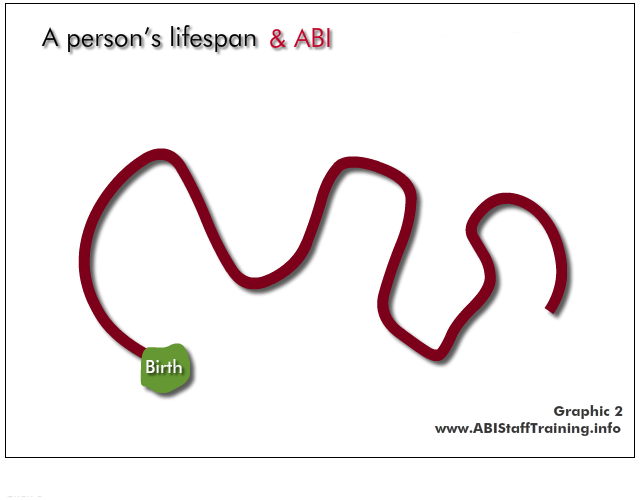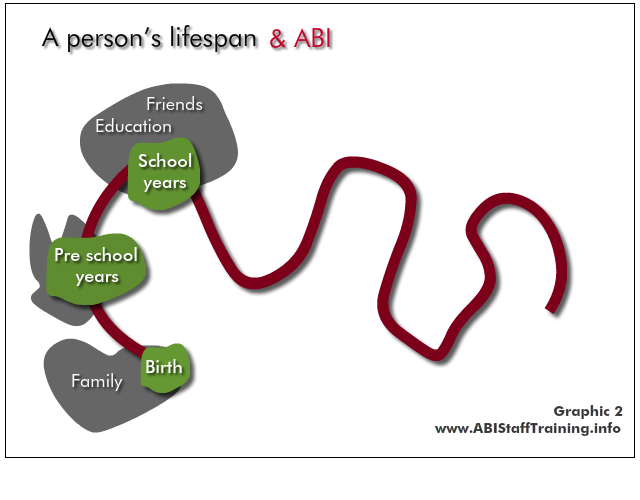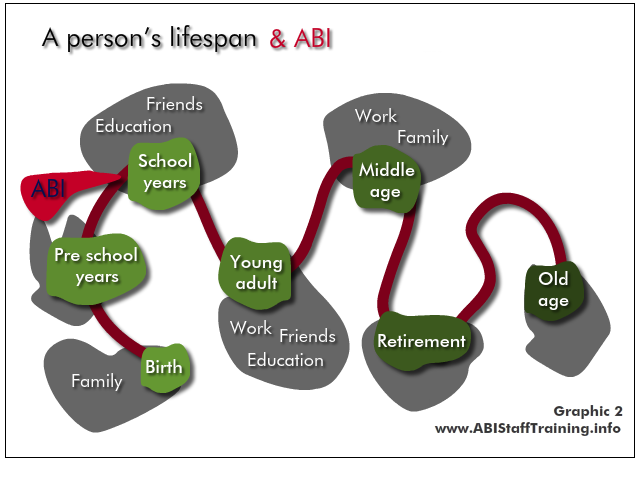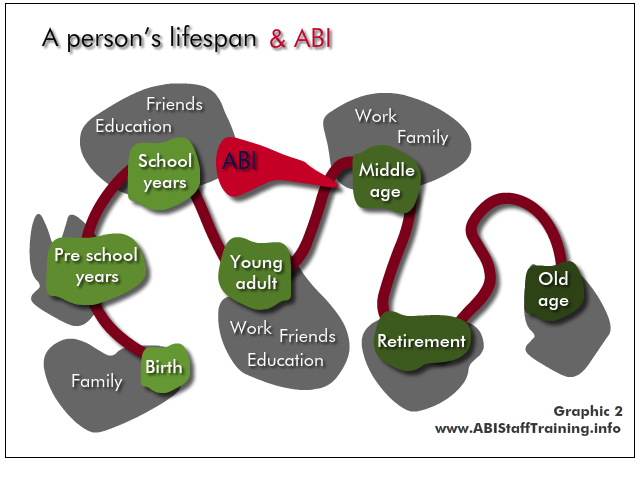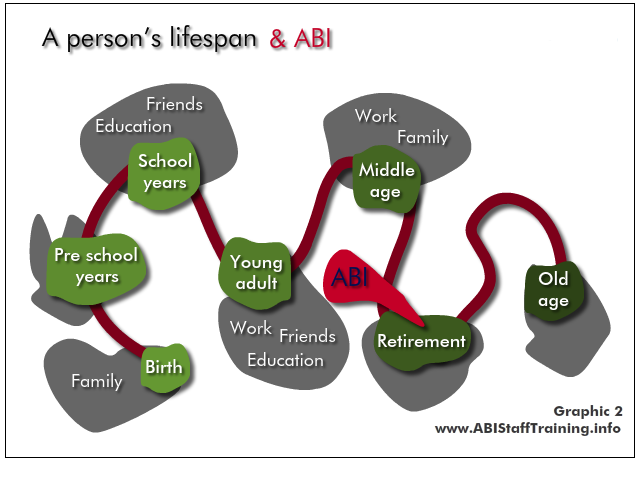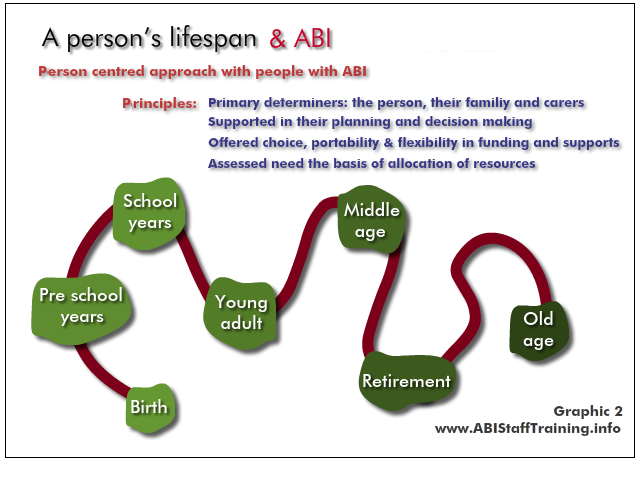- MODULE 1: Introduction to ABI
- Module Introduction
- Take the Pre-test
- a) A person’s abilities & life span
- b) What is ABI?
- c) Causes of ABI
- d) Incidence
- e) The brain
- f) Severity of ABI
- g) Cause to impact
- h) Rehabilitation
- i) Rehabilitation stages & pathways
- j) Common effects
- k) Impacts on life
- l) People with ABI
- m) Family and friends
- n) Key messages and
Tools to explore in Module 2 - o) Building skills
- Take the Post-test
a) A person's abilities and life span 
- i) Introduction
- ii) A person's
abilities: Graphic - iii) A person's
life span: Graphic - iv) Person centred
planning - v) Life span
approach
i) Introduction
It is useful to consider acquired brain injury within the context of a healthy person's abilities and life span.
A health persons's abilities include: understanding and communication, mobility, self-care, interacting with other people, being able to participate in life activities such as leisure, work and school, joining and participating in community activities.
A person's life span typically moves through the stages of birth, pre school years, school years, young adult, middle age, retirement and old age.
An acquired brain injury impacts on a person's abilities at a point in their life span. The nature and extent of the impact and the services and rehabilitation process that will be needed are related to the nature of the injury to the brain and the point in their life span when it occurs.
Planning services for people with acquired brain injury principles should be based on:
- person centred principles
- life span approach
ii) A person's abilities
SLIDES:
To pause: Hover mouse over slide. To continue: move mouse off slide.
To go to a specific slide: Click on slide numbers below.
iii) A person's life span
SLIDES:
To pause: Hover mouse over slide. To continue: move mouse off slide.
To go to a specific slide: Click on slide numbers below.
An acquired brain injury impacts on a person's abilities at a point in their life span. The nature and extent of the impact and the services and rehabilitation process that will be needed are related to the nature of the injury to the brain and the point in their life span when it occurs. Planning services for people with acquired brain injury principles should be based on:
- person centred principles
- life span approach
iv) Person centred planning
A person centred approach puts the client and their family at the heart of all decisions. It aims to:
- Be client focused,
- Promote independence and autonomy,
- Provide choice and control and
- Be based on a philosophy of collaboration and teamwork.
- It takes into account your needs and views and builds relationships with your family members.
A person centred approach gives people:
- valued roles
- participation and belonging in the community
- freely given relationships
- greater authority over decisions about the way they live
- genuine partnership between the service, themselves and/or their family and allies
- individualised and personalised support arrangements.
Person-centred approaches require that organisations:
- have a committed leadership that actively instills the vision of a person-centred approach at all levels
- have a culture that is open to continual learning about how to implement a person-centred approach
- consciously hold positive beliefs about people with a disability and their potential
- develop equal and ethical partnerships with people with a disability and their families
- work with people to individually meet each person’s needs so that they can be in valued roles in valued settings
- develop appropriate organisational structures and processe
v) Life span approach
Working with people with ABI requires a life span approach.
A life span approach is about creating clear long term pathways for people. It involves having the right interventions at each point in a person's life to build their strengths and enable them to participate in and contribute to their communities.
The lifespan approach focuses on a number of significant life stages and transition points. For example:
- working with a secondary student with an ABI would focus on working more intensively with the education system to maximise development of vocational and life skills.
- working with a young person with an ABI who has left school might have a key objective to ensure their life and vocational skills are optimally developed for as independent a life as possible.
- working with adults with ABI ongoing community access services and flexible respite options may be important to support people to continue participating and living in their communities.
